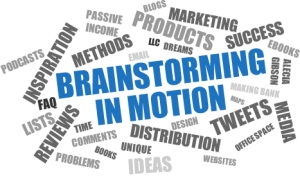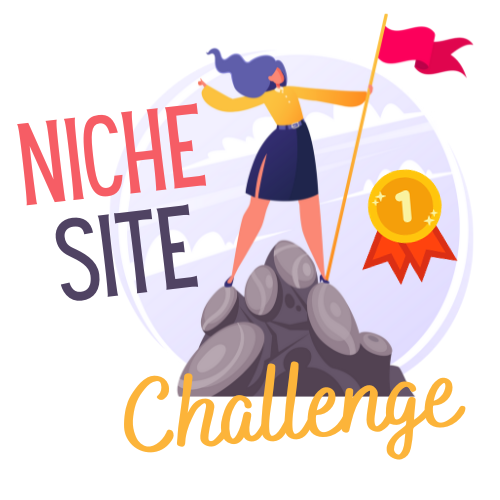 Welcome to the first post of many for my personal niche site challenge. I will not be revealing any of my sites publicly but I am going share the results of the challenge. You are welcome to follow along with your own niche sites.
Welcome to the first post of many for my personal niche site challenge. I will not be revealing any of my sites publicly but I am going share the results of the challenge. You are welcome to follow along with your own niche sites.
I have decided to focus on just 5 of my niche sites to begin with. I hope to eventually grow these into authority sites but, for now, they will just be niche sites. The 5 sites I choose to start working on are sites that I think have a lot of potential. Here are the sites I choose and why I choose them:
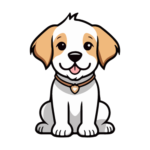 Site #1: The first site I choose for this challenge is a dog website. I started this site in 2016, two years after I adopted my puppy, Remington. I was doing a lot of research about dog training at the time and saw some really bad niche sites and blogs focused around the topic so I started my own site because I thought I could do better. I know that the dog niche is a hard niche to break into but I think there is still a lot of opportunity out there. One of the articles I wrote for the site back in 2016 has made a lot of money over the years and is still making a few bucks every month. Unfortunately, like most of my other sites, I got shiny object syndrome and moved on before this site ever really got off the ground. It only has 12 published posts. One of the big reasons I choose to work on this site, besides the fact that I really like the theme, logo and design, is that over 150 people liked the site’s Facebook page. I really think this site could be an authority site someday. I’m not just limited to Amazon Affiliates for income either. I can create my own dog training products to sell as well as generate revenue from display ads.
Site #1: The first site I choose for this challenge is a dog website. I started this site in 2016, two years after I adopted my puppy, Remington. I was doing a lot of research about dog training at the time and saw some really bad niche sites and blogs focused around the topic so I started my own site because I thought I could do better. I know that the dog niche is a hard niche to break into but I think there is still a lot of opportunity out there. One of the articles I wrote for the site back in 2016 has made a lot of money over the years and is still making a few bucks every month. Unfortunately, like most of my other sites, I got shiny object syndrome and moved on before this site ever really got off the ground. It only has 12 published posts. One of the big reasons I choose to work on this site, besides the fact that I really like the theme, logo and design, is that over 150 people liked the site’s Facebook page. I really think this site could be an authority site someday. I’m not just limited to Amazon Affiliates for income either. I can create my own dog training products to sell as well as generate revenue from display ads.
 Site #2: I have doubts about this website but I like the name of the site and the logo I designed. The name is catchy and very brandable but isn’t too niche so I can move into other related topics as well. It is in the travel niche which, like the dog niche, is super hard to break into. As I mentioned before, I still think there are lots of opportunities in the niche. I know that there isn’t much content on the web about cruising or different cruise ports so I could break into that sub-niche. There are also lots of small to medium-size towns that don’t have much competition that I could write travel articles about. Like site #1, I have a lot of opportunity to make my own products to sell and display ads in the travel niche tend to do well. There are currently 9 articles published on this site – all of them are long, well-researched articles that have good SEO so I shouldn’t have much purging or re-writing to do on this site. The first post was published in 2018.
Site #2: I have doubts about this website but I like the name of the site and the logo I designed. The name is catchy and very brandable but isn’t too niche so I can move into other related topics as well. It is in the travel niche which, like the dog niche, is super hard to break into. As I mentioned before, I still think there are lots of opportunities in the niche. I know that there isn’t much content on the web about cruising or different cruise ports so I could break into that sub-niche. There are also lots of small to medium-size towns that don’t have much competition that I could write travel articles about. Like site #1, I have a lot of opportunity to make my own products to sell and display ads in the travel niche tend to do well. There are currently 9 articles published on this site – all of them are long, well-researched articles that have good SEO so I shouldn’t have much purging or re-writing to do on this site. The first post was published in 2018.
 Site #3: The only reason I’m picking this site is because I feel bad for it. I bought the domain in 2016 and never published a single article. I did install a really nice looking, premium theme with a great looking logo but never got around to publishing anything. It is a hobby cooking niche that is popular among millennials. Unfortunately, I think it is too popular and there is too much competition. The only reason I’m going to try to grow this site is that I think it is extremely brandable. If I can find some low competition keywords, I might be able to get the site off the ground. This is definitely going to be the hardest site to grow and I’m not sure if I can see any success with it but we’ll see. I’m up for the challenge.
Site #3: The only reason I’m picking this site is because I feel bad for it. I bought the domain in 2016 and never published a single article. I did install a really nice looking, premium theme with a great looking logo but never got around to publishing anything. It is a hobby cooking niche that is popular among millennials. Unfortunately, I think it is too popular and there is too much competition. The only reason I’m going to try to grow this site is that I think it is extremely brandable. If I can find some low competition keywords, I might be able to get the site off the ground. This is definitely going to be the hardest site to grow and I’m not sure if I can see any success with it but we’ll see. I’m up for the challenge.
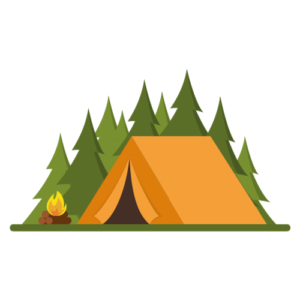 Site #4: I think this is the site I’m the most excited for. This is one of my oldest websites and I started it in 2013. It is in the camping niche. It has a very catchy name, a professional looking logo, a premium theme and is poised to do very well. I just need to find some low competition, high traffic keywords and I think this site could really take off. It has 19 articles published but most are very short articles. They were articles I wrote for a website called Squidoo that is now defunct (awesome website – sad that it shut down) and I moved them over to this site when Squidoo closed down for good. I have already done some keyword research and found a lot of low-competition keywords. I will need to recheck those keywords since it has been a few years since I did that research. The camping niche is so big that there are dozens, if not hundreds, of topics I could write about.
Site #4: I think this is the site I’m the most excited for. This is one of my oldest websites and I started it in 2013. It is in the camping niche. It has a very catchy name, a professional looking logo, a premium theme and is poised to do very well. I just need to find some low competition, high traffic keywords and I think this site could really take off. It has 19 articles published but most are very short articles. They were articles I wrote for a website called Squidoo that is now defunct (awesome website – sad that it shut down) and I moved them over to this site when Squidoo closed down for good. I have already done some keyword research and found a lot of low-competition keywords. I will need to recheck those keywords since it has been a few years since I did that research. The camping niche is so big that there are dozens, if not hundreds, of topics I could write about.
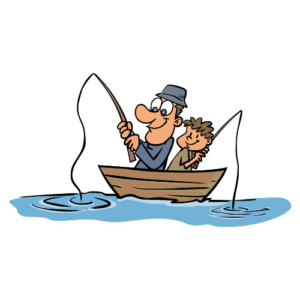 Site #5: This site is my oldest site out of all the websites I own. The site is so old that it got penalized by Google when I used Rank Hero to backlink to it. It was making over $1500 a month when it got penalized. I ended up buying a new domain and transferring the articles over. Luckily, no penalty followed over to the new site but it doesn’t make much money any more – just a few bucks a month. However, if I could get it ranking again for the old keywords, then I think it could make $1500 a month or more. The problem is that there is a ton of competition now. When I started the site, the competition for the main keyword was low. Now it’s dominated by those big media sites like Forbes and Outdoor Magazine. There is still opportunity to get ranked on the front page. I just took a look and there are a few niche websites and blogs on the first page that I could probably outrank if I got enough backlinks. I really think this site could be something special. It is in an outdoor hobby niche and there are currently 28 articles published – the oldest being published in 2013.
Site #5: This site is my oldest site out of all the websites I own. The site is so old that it got penalized by Google when I used Rank Hero to backlink to it. It was making over $1500 a month when it got penalized. I ended up buying a new domain and transferring the articles over. Luckily, no penalty followed over to the new site but it doesn’t make much money any more – just a few bucks a month. However, if I could get it ranking again for the old keywords, then I think it could make $1500 a month or more. The problem is that there is a ton of competition now. When I started the site, the competition for the main keyword was low. Now it’s dominated by those big media sites like Forbes and Outdoor Magazine. There is still opportunity to get ranked on the front page. I just took a look and there are a few niche websites and blogs on the first page that I could probably outrank if I got enough backlinks. I really think this site could be something special. It is in an outdoor hobby niche and there are currently 28 articles published – the oldest being published in 2013.
The Goal
Deciding on a goal for this challenge is a bit difficult. All I want is to start making more money. But how will I know if the challenge was successful? I need a concrete goal that I can reach for. That goal is:
Make $100 a month in 6 months
This goal is for each individual website. I want each of my 5 websites to be making $100 a month within 6 months. I think this is an achievable goal if I work hard and stick to the plan.
The Plan
I’m not exactly sure how I want to organize the tasks I need to do for this challenge. For now, I’m going to organize them by phases and I can change it later if needed. These tasks are based on The SEO Kitchen Sink Method.
Phase 1: Technical SEO
Task #1: Fix coding errors
Task #2: Update the servers
Task #3: Page speed optimization
Task #4: Fix indexation bloat by adding “noindex” to irrelevant pages
Task #5: Add title and meta description to all articles using Yoast SEO – Test Schema using Google’s schema tester
Task #6: Add alt text to all images. Make sure all forms are labelled for screen readers.
Task #7: Make sure all affiliate links are nofollow
Task #8: Make sure the site is HTTPS compliant. Make sure there is the lock symbol. Make sure the site is running on HTTP/2.
Task #9: Run the Google Mobile Friendly test and make sure the site is mobile friendly.
Task #10: Make sure the sitemap is submitted to Google Search Console
Task #11: Set category pages to show 50 posts per page.
Task #12: Delete and 301 redirect pages and posts that are no longer relevant.
Task #13: Set up breadcrumbs schema using Yoast SEO
Task #14: Make sure all links have a “title” tag for use with screen readers. Make sure text is big enough to be read by everyone.
Task #15: Make sure there are no broken images. Make sure Yoast SEO redirects images back to the page they are on. Make sure there are no image pages.
Task #16: Make sure there are no broken links and 301 redirect any broken pages.
Phase 2: On-Page SEO
Task #1: Make sure every article links to 5 other articles (some sites might need more articles to do this).
Task #2: Publish 10 informational articles – be sure to research the keywords first to make sure they are low comp.
Task #3: Make sure all articles are on-topic and answer the searcher’s question.
Task #4: Make sure all articles are updated and have a new updated date.
Task #5: Publish 5-10 articles centered around a specific relevant topic.
Task #6: Make sure keywords are evenly spaced throughout each article – no keyword stuffing!
Task #7: Make sure the reading score is good for each article.
Task #8: Make sure each article has lots of tables, charts, lists, videos, quizzes, images, table of contents and resource sections.
Task #9: Make sure each article is using headers correctly.
Task #10: Make sure each keyword is only being targeted by one article. If two articles target the same keyword, 301 redirect one of the articles.
Task #11: Add 5 outbound links to each article. The outbound links should be to a high authority/trusted site.
Phase 3: Off-Page SEO
Task #1: Disavow any bad links pointing to the site.
Task #2: Get 10 high-DR backlinks on trusted/authority sites. Guest posts are the best and easiest way to do this. Make sure to use keyword only 1 time in anchor text – never use the same anchor text twice.
Phase #4: Branding Signals
Task #1: Set up social media accounts – Facebook, Youtube, Threads, Pinterest and Instagram
Task #2: Link to the social media accounts in the sidebar and add schema in the header telling Google about these accounts. Make sure the sidebar links are dofollow.
Task #3: Get 25 backlinks to the homepage.
Task #4: Get 5 backlinks from .edu, .gov, and other official brands.
Task #5: Get backlinks from the following sites: Wikipedia, Reddit, 3 niche forums, 2 news sites.
Task #6: Mention website in 25 comments on blogs, forums, etc – these are not backlinks, just talking about your website. Try to get a Wikipedia page for the brand.
Task #7: Publish an About Us page. Make sure the site has a contact us, terms of service and disclosure page.
Task #8: Create an Author’s box or bio. Make the author look like a real person with social media links, email, address, etc.
Task #9: List “As Seen On” logos and links in the sidebar or on the homepage.
Task #10: Use Yoast SEO to make sure the author information is entered into the site’s schema.
Phase #5: Rinse & Repeat
Task #1: Do keyword research and find 50 keywords to target – make sure 30 of them are informational. Vary the styles (how-to, ideas, product vs product, product review, top 10, etc). Keywords should be low competition with decent traffic (500 or higher views per month).
Task #2: Publish 1 article per week.
Task #3: One social media post per platform per day.
Task #4: Create 1 high authority backlink per week.
Task #5: Create 10 other backlinks per week – 6 of these should be to the homepage.
Task #6: Mention website on 5 different sites.
Optional
Task #1: Publish 1 YouTube video per week.
This looks like a lot of work when I write it all down. If I take it one task at a time, I think I can get everything done in 6 months. Or at least done enough that I can reach my goal of $100 per month per site. I think I’m going to aim for completing one phase per month and the last 2 months will be focused on phase 5 – adding articles and backlinks to continue to grow the sites. If I’m feeling really ambitious, I can make and publish YouTube videos to add to each site’s YouTube channel. I think that would really help grow the brands and look more of an authority in Google’s eyes. Overall, I’m excited about this plan and I’m ready to start tackling it. I will post an update every Monday and let you know how the challenge is going and what my goals for the following week are. This week, I’m going to try to get through Task #5 in Phase #1 for all the sites.
